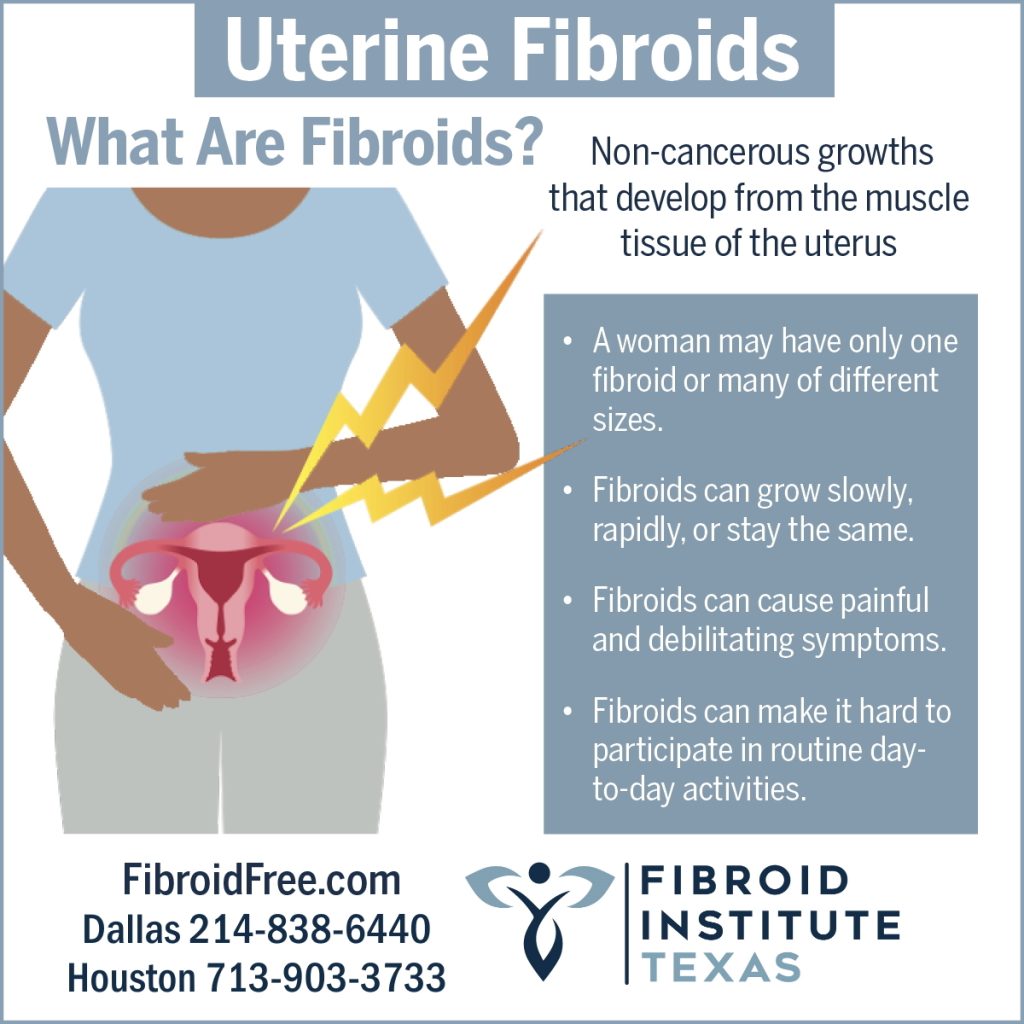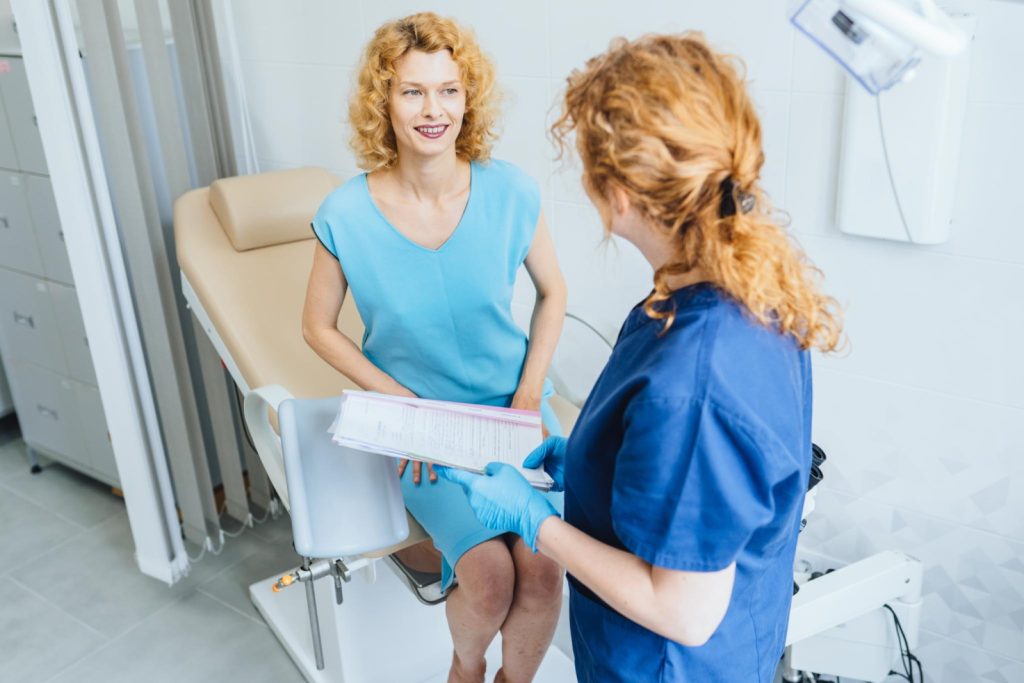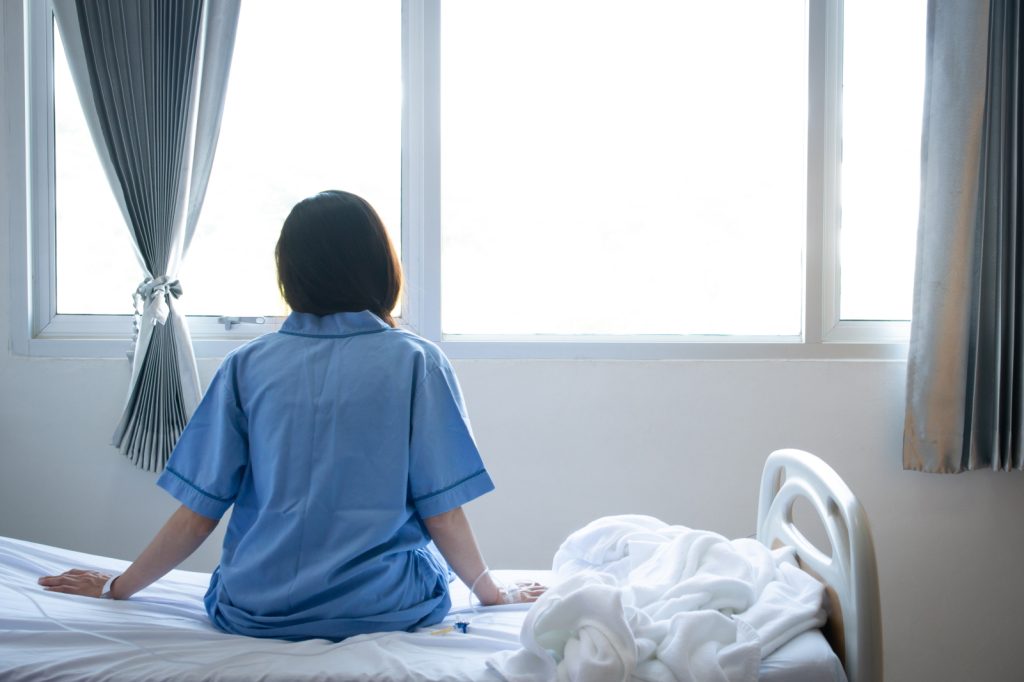Uterine fibroids are the most frequently seen tumors of the female reproductive system. Studies show three out of four women will develop them during their lifetime. While some women don’t experience symptoms, the good news is those who do can avoid continuing to suffer in silence. There are effective options for ridding yourself of fibroids and the often-debilitating symptoms that follow. Some women may elect to have fibroid surgery. Others choose a non-surgical treatment such as uterine fibroid embolization (UFE). The expectation is that whichever option patients decide upon will get them back to living a symptom-free life.
Depending on the specific surgical procedure or treatment it is unlikely that fibroids grow back after. However, some women may experience regrowth or new fibroids years down the line. This article explores how and when that might be possible, what surgical and non-surgical options exist, and how UFE can provide alternatives to surgery with several sought-after features.
Firstly, What Are Fibroids?

Uterine fibroids, also called leiomyomas (lie-o-my-O-muhs), are noncancerous growths of the uterus that often appear during childbearing years. Researchers estimate that 70 to 80 percent of all women develop fibroids between 35 and 54. However, fibroids can occur in women younger than 35 and until menopause. Many patients have one or several fibroids that differ in size and either stay that way or grow at different rates. Some women do not experience symptoms. Those who do report a variety of debilitating symptoms.
Common Symptoms of Fibroids
- Heavy menstrual bleeding
- Debilitating cramps, pelvic pain, and pressure
- Periods that last longer than a week
- Pain during sex
- Back or leg pain
- Urinary frequency
- Excessive fatigue
- Bloating or swelling in the lower abdomen
- Constipation, diarrhea, and rectum discomfort
- Weight gain
Is Fibroid Surgery My Only Option for Fibroid Removal?
Traditional fibroid surgery such as a hysterectomy or myomectomy is a way to “remove” fibroids. But what some women haven’t been informed of is the difference between fibroid removal and fibroid treatment. Non-surgical fibroid treatment options such as uterine fibroid embolization (UFE) focus on shrinking the fibroids by reducing their blood supply growth source rather than invasively removing them. By treating fibroids with UFE, a woman can avoid a messy and painful surgery but still achieve highly successful results. Which option is best for you depends on your unique situation.

Hysterectomy
This fibroid surgery removes all or part of a woman’s uterus and, in some cases, the fallopian tubes and ovaries, depending on fibroid location. Hysterectomy is incredibly common, with approximately 600,000 hysterectomies being performed annually in the United States. It is generally recommended if a woman:
- Has cancer of the uterus, cervix, vagina, fallopian tubes, and/or ovaries
- Suffers from severe Pelvic Inflammatory Disease
- Has uncontrollable bleeding
- Experienced complications from childbirth
It takes a longer time to heal from a hysterectomy, and your body will experience significant changes. Typical recovery from a hysterectomy is 6 weeks.
Myomectomy
All too often, a hysterectomy is presented as a woman’s only option. In fact, as many as 1 in 5 women in the United States whose doctor recommended a hysterectomy don’t need one. Conversely, a myomectomy removes only the symptom-causing fibroids to preserve the uterus. This is music to the ears of women who don’t want to have their entire uterus and, in some cases, fallopian tubes and ovaries, removed by way of a hysterectomy.
Approximately 30,000 myomectomy surgeries are performed annually. Many patients say they no longer experience fibroid pain and symptoms. It is still considered fibroid surgery, however, with an incision and recovery period of 2-6 weeks. It eliminates the ability to have a vaginal birth in the future. Most gynecologists insist on C-section after myomectomy.

Uterine Fibroid Embolization (UFE)
Fibroid treatment with UFE is different because it isn’t surgery. Rather than remove fibroids through surgical incisions and a lengthy recovery time, UFE focuses on eliminating the blood supply that feeds the fibroids. As a result, the fibroids shrink and die. UFE is equally as effective as fibroid surgery at eliminating fibroids and the symptoms they cause. But by opting for a minimally invasive approach, a woman who fears fibroid surgery or isn’t a candidate can avoid all of that and still achieve highly successful results. With UFE at Fibroid Institute, you can expect:
- No hospital stay
- No incision, making it less invasive than surgery
- No scarring
- No vaginal access
- No uterus removal
- No long recovery period, only 1 week in most cases
- No side effects of hormone therapies
- Yes – Fibroid symptoms improve dramatically
But Can My Fibroids Grow Back?
Most women who have had fibroid symptoms for a long time notice significant improvement after fibroid treatment or no longer have any symptoms at all. But there are studies showing it is possible for uterine fibroids to grow back or for new ones to develop, depending on the procedure.
According to a myomectomy study, fibroids regrew within the first few years after the procedure in up to 20 out of 100 women. Furthermore, the University of California San Francisco states that the younger you are and the more fibroids you have at the time of your myomectomy procedure, the more likely you are to develop fibroids again in the future. While it is difficult to determine exactly why this can happen, it is possible that reoccurrence happens more with myomectomies because of the fact that it focuses solely on removing the existing fibroids while leaving the uterus intact. It does nothing to stop new ones from forming. In addition, during myomectomy any smaller fibroids missed or left in order to preserve the uterus will grow into larger fibroids.
When it comes to hysterectomy, prevailing evidence suggests that it is almost unheard of that a woman can regrow fibroids or suffer from new formations since the uterus no longer exists, and the fibroids don’t have anywhere to grow. Rarely will a fibroid grow near, but not actually on the uterus, even when the uterus is gone. This is true regardless of whether a woman undergoes a total or partial hysterectomy. Many women, however, are concerned about the risks associated with hysterectomy and seek to avoid this fibroid surgery unless absolutely necessary.
UFE, on the other hand, is a safe and effective non-surgical alternative to hysterectomy and myomectomy because it eliminates complications due to traditional surgical procedures. When compared with hysterectomy and myomectomy, women who undergo this fibroid treatment experience a dramatic improvement in their symptoms, a decrease in size of their fibroids, and the ability to maintain their uterus. UFE does offer a 90% effective rate in comparison to fibroid surgery. Although possible, women’s fibroids typically do not grow back after they receive this treatment.
This is where working with fibroid experts who are specialists in fibroid treatment and highly experienced in UFE is important. Rather than offering other treatment options, or treating patients with conditions other than fibroids, the amazing team at Fibroid Institute spends every working day helping fibroid patients specifically with the UFE treatment. This means we can dedicate 100% of our focus to one procedure, ensuring that our patients have the best and most effective experience possible while at the same time avoiding complications.

You Can Avoid Fibroid Surgery with UFE
At Fibroid Institute, we understand how frustrating and painful it can be to have fibroids. And when you think your only option is fibroid surgery, prognosis for the future can seem bleak. This is where we can help. If you are a candidate for UFE, our specialists can make being fibroid free as easy as 1-2-3.
When it comes to treating your uterine fibroids, consider uterine fibroid embolization (UFE) for non-surgical fibroid treatment. Rather than a hospital stay, UFE is a same-day outpatient procedure. In fact, at Fibroid Institute Texas, we offer UFE to patients in the convenience and comfort of our Dallas and Houston fibroid clinics equipped with advanced medical technology.
The specialized team at Fibroid Institute, with Houston and Dallas fibroid doctors, have helped thousands of women discover the joys of living fibroid free. With each UFE procedure, patients are empowered to achieve their full potential without being limited by fibroid symptoms. For many women, UFE changed their lives. Meet some of these women here:
Most major medical insurance providers cover the cost of UFE. You will need a formal consultation to determine if you are a candidate before scheduling your procedure. Call for a telehealth consult or an in-office appointment in Dallas at 214-838-6440 or Houston at 713-903-3733 or complete the form below.
"*" indicates required fields
Fibroid Institute Texas serves the Dallas and Houston areas including Fort Worth, Grand Prairie, HEB, Arlington, Hutchins, Irving, Duncanville, DeSoto, Cedar Hill, Lancaster, Cockrell Hill, Highland Park, University Park, Park Cities, Garland, Mesquite, Richardson, Dallas, Sherman, Houston, Sugar Land, Katy, Webster, Clear Lake, The Woodlands, Universal City, Spring, Kingwood, Stafford, Conroe, Texas City, Cypress, League City, Bellaire, Addison, Carrollton, Plano, Frisco, McKinney, Craig Ranch, Allen, and more.
Prior to starting any new treatment or if you have questions regarding a medical condition, always seek the advice of your doctor or other qualified health provider. This information is not a substitute for professional medical advice.

